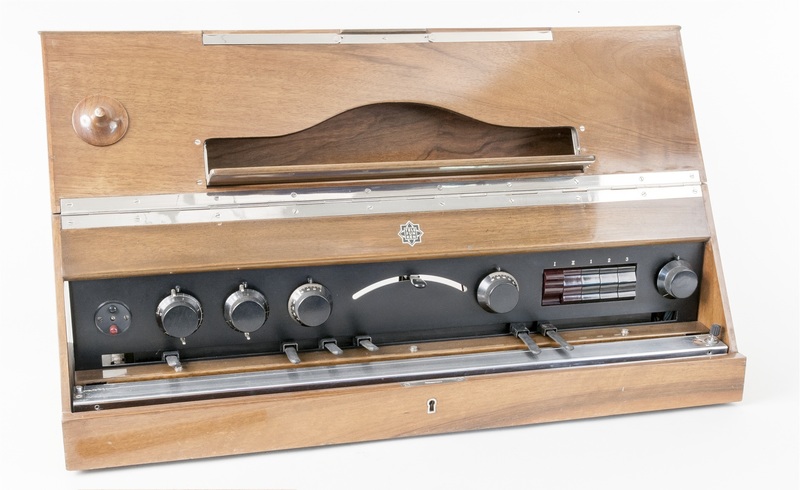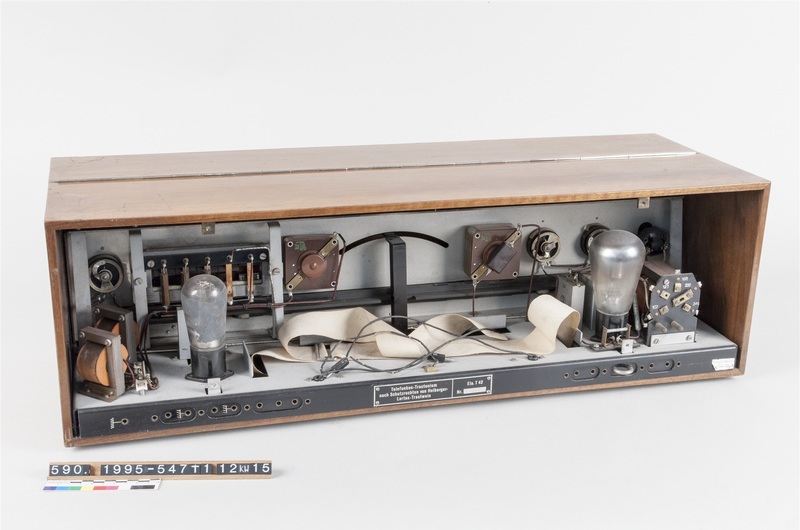The Evolution of the Trautonium
Following the RVS-Trautonium’s debut, Sala and Trautwein collaborated on developing the Telefunken-Trautonium (later called the Volkstrautonium) after the eponymous radio and electronics firm that was interested in the commercial potential of the instrument for domestic users. During this period, Sala engaged more intensively with the Trautonium both musically and technically. As the instrument’s soloist, Sala publicized the Trautonium at various radio exhibitions. Additionally, Sala supplemented his artistic skill and technical expertise with theoretical knowledge by studying physics at the Humboldt University in Berlin. Nonetheless, the lectures by renowned figures at the university – including Walter Nernst who was involved in the development of one of the first electric pianos, the Neo-Bechstein grand piano – and the practicals in theoretical and applied physics were only obliquely helpful. Sala had to acquire much of the knowledge he needed for his specialist field through independent research.[4]
[4] Sala recounts his university days in Peter Badge, Oskar Sala. Pionier der elektronischen Musik, Göttingen 2000, [unpaginated].
Citation: Julin Lee, ‘Subharmonic Fantasias: The Legacy of Oskar Sala and the Mixturtrautonium’, in: Materiality of Musical Instruments. A Virtual Exhibition.


